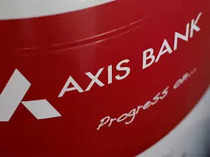 ET Bureau
ET BureauThe transactions, referred to as ‘Barrier FX options’, were undertaken for the purpose of managing currency risks and mark the entry of Indian corporate houses in utilising complex derivative products for hedging foreign exchange and rate differential risks. The transactions were worth around $8-10 million.
In a release, Axis Bank said that the private lender had conducted such transactions with Supreme Petrochem and others. A separate report by the Economic Times said that RIL and L&T had also carried out such deals with ICICI Bank and Barclays.
Speaking to ETMarkets.com, Neeraj Gambhir, Group Executive – Treasury, Markets and Wholesale Banking Products - Axis Bank, explained the contours of the transactions and mapped the future trajectory of Indian companies increasingly opting for more complex derivative transactions rather than the hitherto utilised ‘plan vanilla’ structures.
In September 2021, RBI had released master directions on market makers in OTC derivatives in which it defined the parameters within which products such as credit default swaps, forward rate agreements, foreign exchange forwards and interest rate swaps could be utilised.
“It has been a very vanilla market in the sense that the structures that were allowed at the time when RBI introduced FC-rupee options were vanilla structures because the thinking was that it’s a new market and therefore they should allow the market to develop, understand the product over a period of time and steadily allow more complexity,” Gambhir said.
These (the transactions with RIL and others) are basically $8-10 million transactions which have happened for a very short period of time and this is just to kick-start the market, he stated.
“What we’ve done is a very simple Barrier option. It’s the next level of complexity compared to what was permitted so far but the guidelines are fairly wide on what can be done. We are talking to a number of clients, in fact besides Reliance we also transacted with two other customers.”
Barrier options are essentially derivatives contracts which entitle an entity to receive a payout if the underlying asset breaches a particular level specified in the contract.
According to Gambhir, over time, more and more corporate entities, including medium-sized ones, are likely to avail of such complex derivative structures.
While these provide a greater degree of flexibility in navigating volatility in the exchange rate, RBI has only over the last couple of years permitted greater usage of exotic derivatives.
The central bank’s gradual approach may have, in part, been driven by the experience of the global financial crisis of 2008, in which the widespread use of derivatives such as credit default swaps and options attracted attention because of a lack of transparency.
“We had the global financial crisis in 2008 and the entire episode that plagued financial markets, etc. So, all the changes were kept on the backburner; everybody was focused on the vanilla business,” said Gambhir, who was on the RBI’s Committee on Rupee Interest Rate Derivatives in 2003.
“Two lessons that people have derived out of the financial crisis is to firstly, keep it simple; not too complicated and secondly, understand the risks before you enter into the transactions. So, if you see the regulatory guidelines, there is a fairly detailed amount of disclosure that banks are required to make to the customers,” he said.
Read More News on
Download The Economic Times News App to get Daily Market Updates & Live Business News.
Subscribe to The Economic Times Prime and read the Economic Times ePaper Online.and Sensex Today.
Top Trending Stocks: SBI Share Price, Axis Bank Share Price, HDFC Bank Share Price, Infosys Share Price, Wipro Share Price, NTPC Share Price
Read More News on
Download The Economic Times News App to get Daily Market Updates & Live Business News.
Subscribe to The Economic Times Prime and read the Economic Times ePaper Online.and Sensex Today.
Top Trending Stocks: SBI Share Price, Axis Bank Share Price, HDFC Bank Share Price, Infosys Share Price, Wipro Share Price, NTPC Share Price












 Get Unlimited Access to The Economic Times
Get Unlimited Access to The Economic Times
